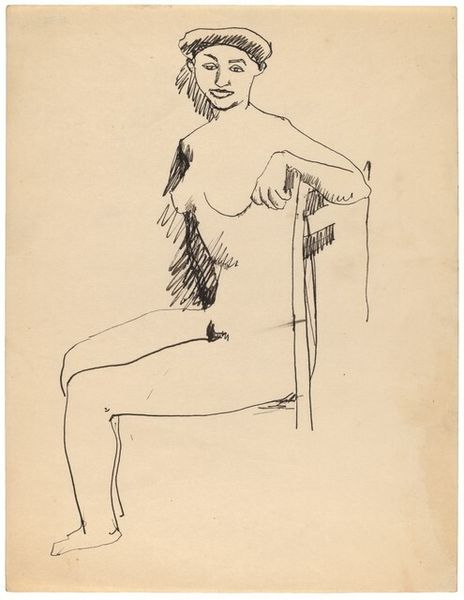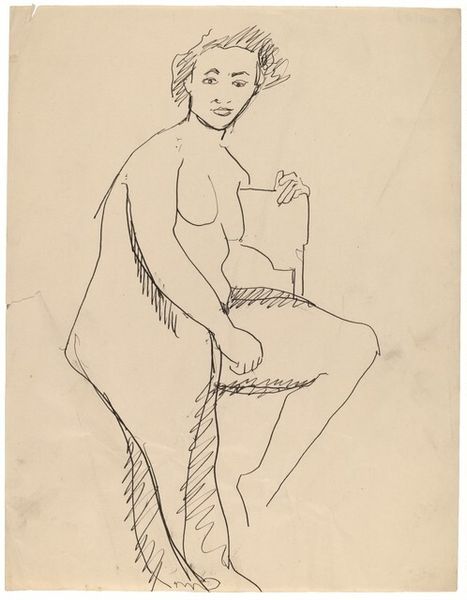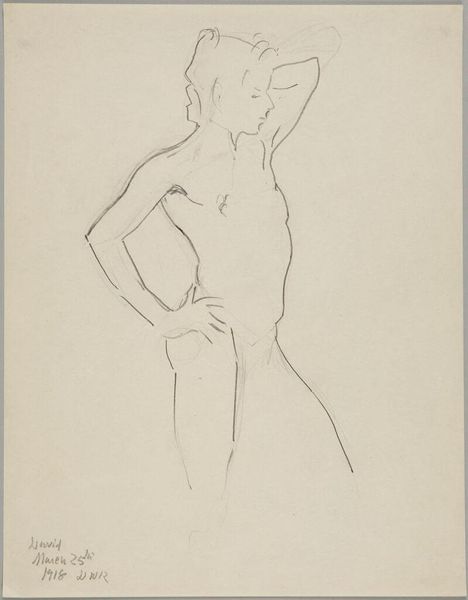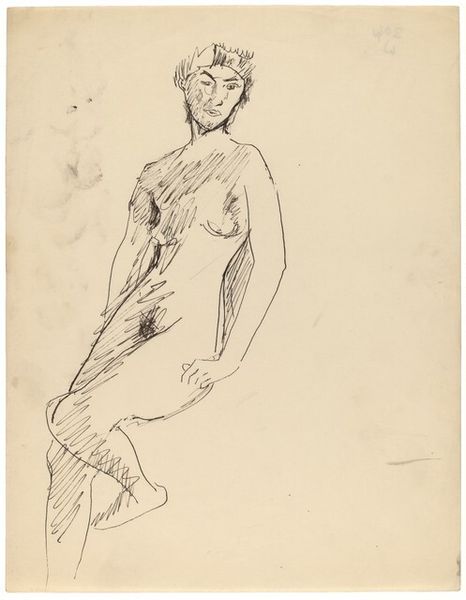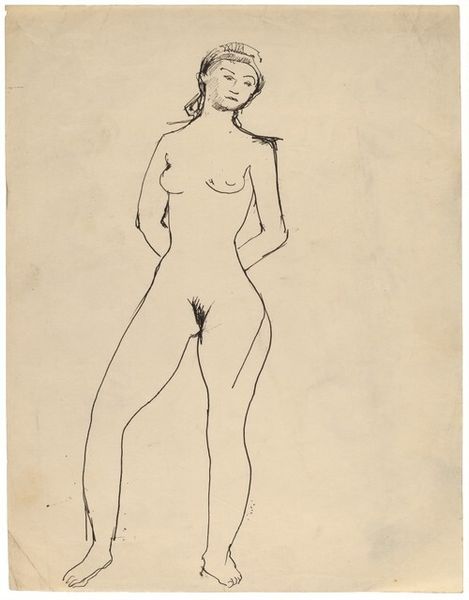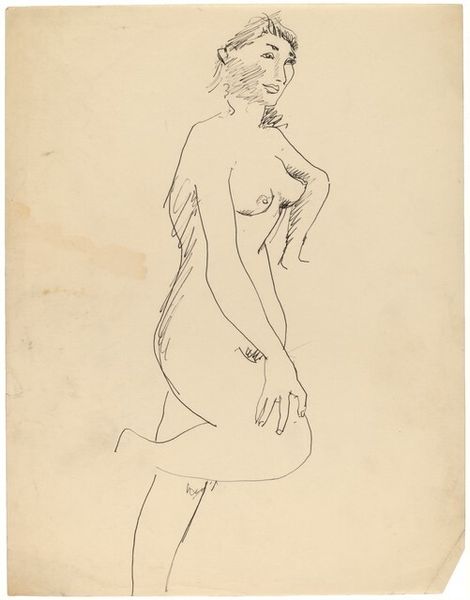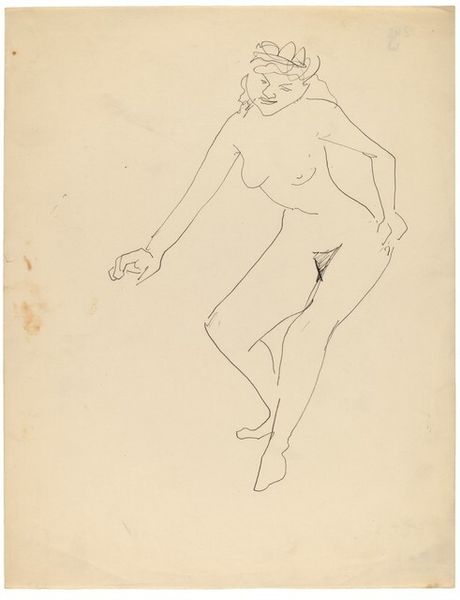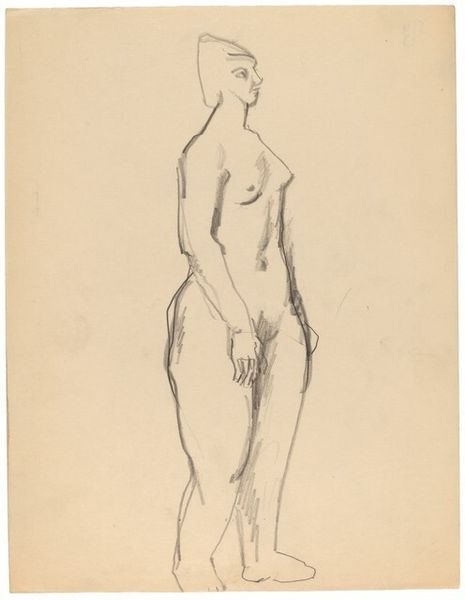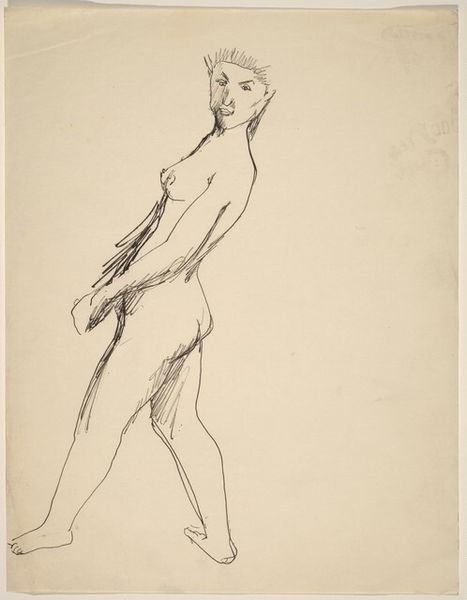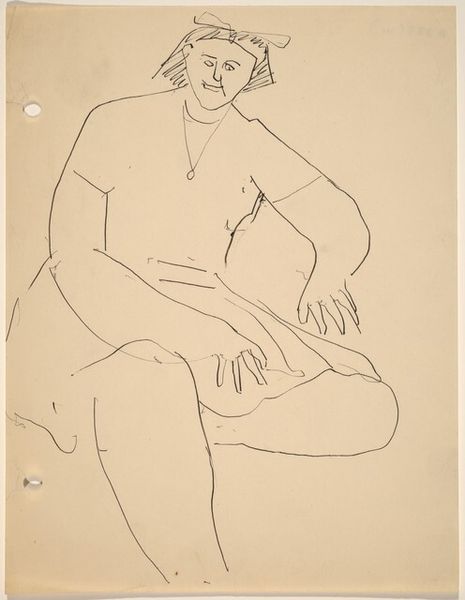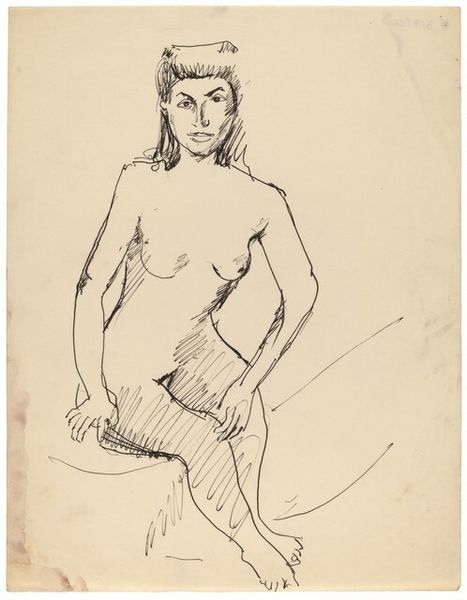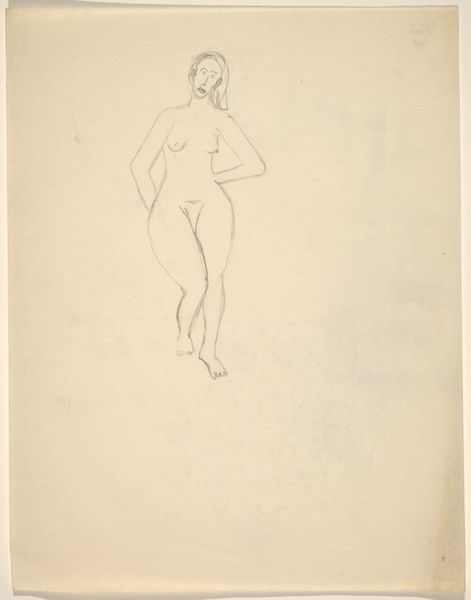
drawing, ink
#
portrait
#
drawing
#
figuration
#
ink
#
nude
Dimensions: overall: 27.7 x 21.6 cm (10 7/8 x 8 1/2 in.)
Copyright: National Gallery of Art: CC0 1.0
Editor: Here we have Mark Rothko's ink drawing, "Seated Female Nude, Crossed Arms Resting on Knees." I’m struck by the subject's closed-off pose, which makes me feel like she's trying to protect herself. What do you make of this piece? Curator: It’s fascinating to consider Rothko, known for his abstract expressionism, engaging with the figure in this way. The figure seems both vulnerable and defiant. The simplicity of the line drawing underscores a raw emotional state, doesn’t it? Think about the historical context of representing the female nude. Whose gaze is centered? And what narratives are typically imposed? Does this drawing subvert those expectations? Editor: That’s interesting. I hadn’t thought about it in terms of the male gaze. It feels more… intimate somehow, less about objectification. The lack of detail invites me to project my own feelings onto her. Curator: Exactly! Rothko often aimed to evoke profound emotional responses in viewers. Here, the lack of idealization encourages us to confront vulnerability and perhaps recognize shared experiences of self-protection and resilience. How might feminist theory help us interpret her posture of crossed arms? Editor: Maybe as a rejection of societal expectations of female availability, a claiming of personal space? Curator: Precisely! And think about the socio-political context Rothko was working in. Ideas of personal and political liberation were becoming more mainstream, which affected all artists, even those who seem less political on the surface. Editor: I see the work very differently now, less about individual sadness and more about a universal, even feminist, statement. Thank you! Curator: It’s amazing how much a shift in perspective can change our understanding. It shows the power of intersectional approaches to art history!
Comments
No comments
Be the first to comment and join the conversation on the ultimate creative platform.
